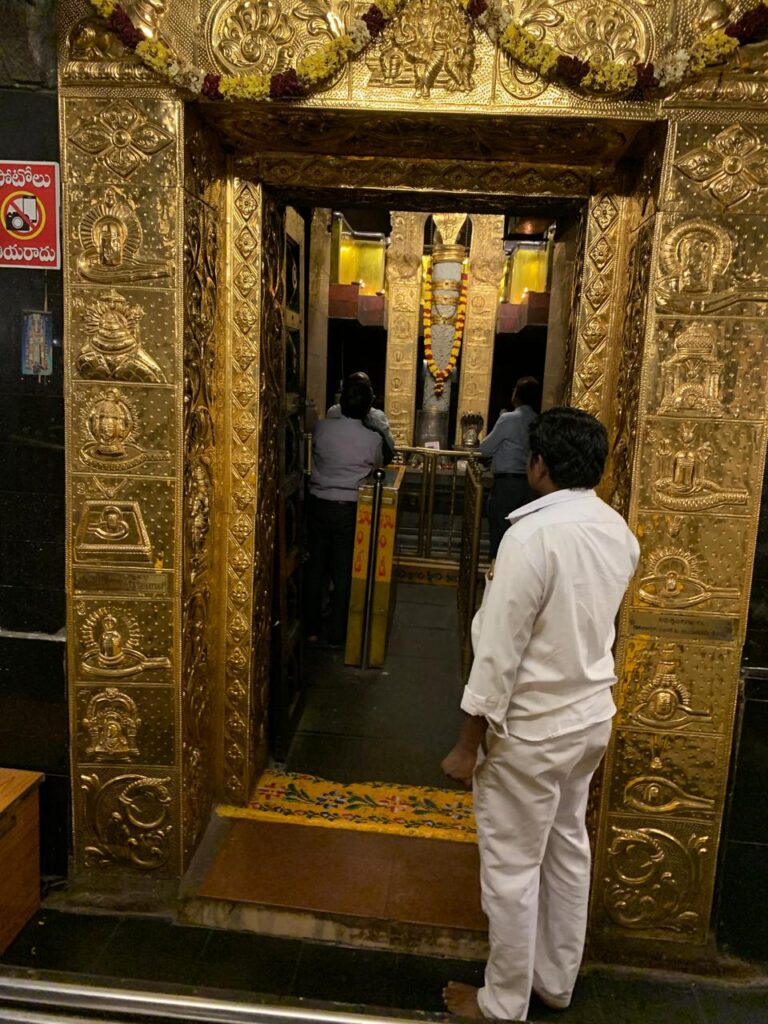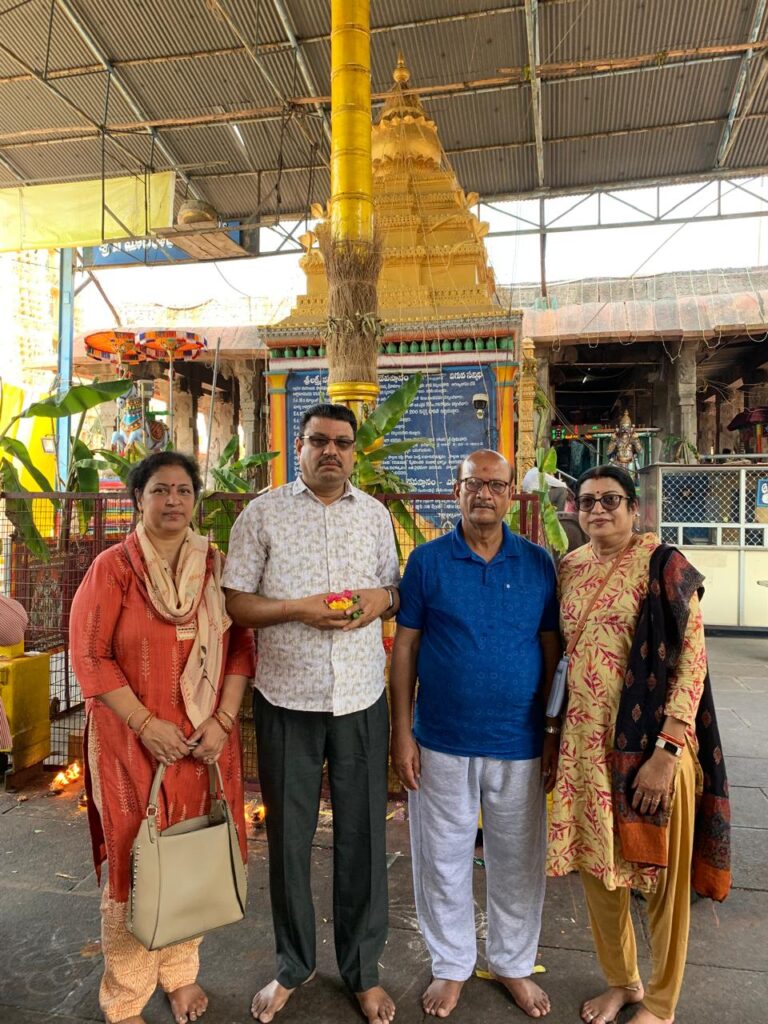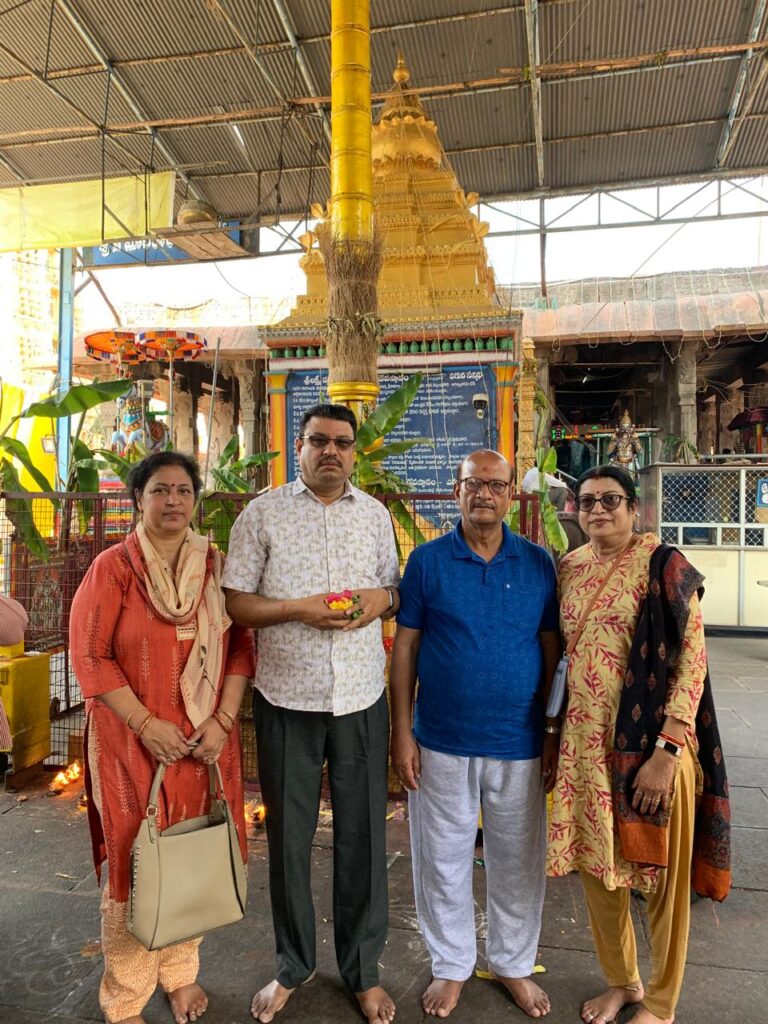A Spiritual Odyssey: My Visit to the Amareswar Temple on 16.3.25
By Lokanath Mishra
As I stepped into the revered Amareswar Temple on 16.3.25 along with my wife, her brother and sister in law,I was enveloped in a sense of tranquility and spiritual awe. Located on the picturesque Krouncha Saila hill near the Krishna River, this ancient temple has been a beacon of devotion and worship for centuries.

As I explored the temple complex, I was struck by its rich history, which dates back to the 11th century. The earliest inscription, found on the temple walls, dates back to 1129 CE, providing a glimpse into the temple’s fascinating past. The temple’s architectural style, a blend of Dravidian and Buddhist influences, is a testament to the region’s cultural and spiritual heritage.

According to legend, the temple’s origins are attributed to the demon king Tarakasura, who, after receiving a boon from Lord Siva, defeated the gods. To restore order, Lord Shiva vowed to eliminate the demon, and the gods came to reside at the site, thus giving the name Amaravati. Here, Shiva is worshipped as Amareswara, accompanied by his consort Bala Chamundika, one of the 18 revered goddesses.
As I approached the sanctum sanctorum, I was struck by the towering 15-foot white marble lingam, known as Amareswara or Amaralingeswara. This magnificent lingam, the largest among the Pancharama lingams, is worshipped through prayers and abhisheka rituals performed from a platform within the sanctum.
The temple’s history is also marked by patronage from various dynasties, including the Kota chiefs and the Vijayanagara Empire. Notable contributions were made by Sri Krishnadevaraya, who added a mandapam (pavilion) to the temple. In the late 18th century, the temple underwent extensive expansion under the patronage of Vasireddy Venkatadri Nayudu, the Rajah of Chintapalli.
As I departed the temple, I felt a deep sense of spiritual connection and awe. The Amareswar Temple’s rich history, stunning architecture, and sacred energy make it a truly unforgettable experience. My visit on 16.3.25 will remain etched in my memory forever, a testament to the temple’s enduring spiritual significance.
A Spiritual Oasis: Unveiling the Majestic Amararama Amareswara Swamy Temple
Tucked away in the picturesque town of Amaravathi, in the Palnadu district of Andhra Pradesh, lies the revered Amararama Amareswara Swamy Temple. This ancient Hindu temple, dedicated to Lord Siva, is one of the five sacred Pancharama Kshetras and boasts a unique distinction of being situated on the Krishna River.
A Marvel of Dravidian Architecture
The temple’s origins date back to the 11th century, with the earliest inscription recorded in 1129 CE. Over the centuries, the temple has been patronized by various dynasties, including the Kota chiefs and the Vijayanagara Empire. Notable contributions were made by Sri Krishnadevaraya, who added a mandapam (pavilion) to the temple. Major renovations were carried out in the late 18th century, restoring the temple to its former glory.

Built in the Dravidian architectural style, the temple features four majestic gopuras and a central vimana. The temple’s design is a testament to the region’s rich cultural heritage and architectural expertise. As one approaches the temple, the imposing structure seems to rise from the earth, its beauty and grandeur leaving a lasting impression on the mind.
A Sacred Sanctuary
The temple enshrines a magnificent 15-foot white marble Sivalinga, which is the main deity, Lord Amareswara (also known as Amaralingeswara). The linga is accompanied by his consort, Bala Chamundika. Daily rituals are performed by priests on a platform, adding to the temple’s spiritual ambiance.
The temple’s location on Krouncha Saila, a small hill near the Krishna River, adds to its scenic beauty. The surrounding village of Amaravathi is named after the temple, and its name has also inspired the planned capital of Andhra Pradesh, Amaravati, located 35 kilometers to the east.
A Hub of Spiritual Activity
The Amararama Amareswara Swamy Temple is a significant spiritual and historical site, drawing pilgrims from across the region. Major festivals, such as Maha Sivaratri and Navaratri, are celebrated with great fervor, attracting devotees from far and wide. As one of the five sacred Pancharama Kshetras, the temple holds a special place in the hearts of devotees, who come to seek the blessings of Lord Siva.
In conclusion, the Amararama Amareswara Swamy Temple is a spiritual oasis that offers a glimpse into the region’s rich cultural heritage and architectural expertise. As a sacred sanctuary, the temple continues to inspire devotion and spirituality, making it a must-visit destination for anyone seeking a deeper connection with the divine.

